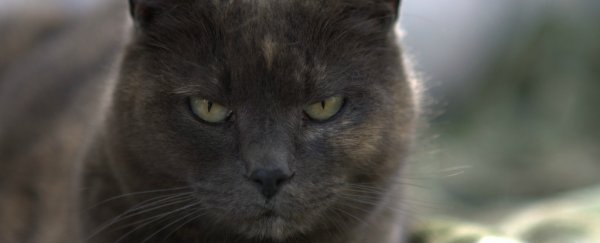Researchers in Australia have found that 99.8 percent of the country is now covered in feral cats, which are wreaking havoc on the country's native wildlife and even driving certain species extinct.
The new research is a meta-analysis of 91 separate studies conducted by 40 different research teams – and it shows that nearly the entire country is home to the animals, including 80 percent of the small islands that surround the mainland.
"Australia's total feral cat population fluctuates between 2.1 million when times are lean, up to 6.3 million when widespread rain results in plenty of available prey," said one of the researchers, Sarah Legge, from the University of Queensland.
While that might sound like ridiculous feral cat domination, the new estimate is actually lower than previous studies, which claimed Australia was home to upwards of 20 million feral cats. But even with that reduction, there's still a major problem at hand.
"Our study highlights the scale and impacts of feral cats and the urgent need to develop effective control methods, and to target our efforts in areas where that control will produce the biggest gains," Legge said.
To come to their conclusion, the team analysed feral cat population data taken by 40 different research teams who – in total – published 91 site-based cat density estimates.
When all of this data was added together and analysed, the team was accurately able to show just how widespread feral cat populations are, and how they could be impacting the ecosystem.
While feral cats are found in nearly every country on Earth – back in 2004, researchers in the US estimated that there were roughly 70 million feral cats living in the country – they pose a significant threat to places like Australia. That's because native wildlife evolved in the island habitat without the pressure of predatory feral cats, and aren't equipped to avoid them.
"At the moment feral cats are undermining the efforts of conservation managers and threatened species recovery teams across Australia," Legge explains.
"It is this difficulty which is pushing conservation managers into expensive, last resort conservation options like creating predator free fenced areas and establishing populations on predator-free islands."
In fact, feral cats have been blamed for the extinction of 20 Australian mammals since they were first introduced to the continent with European settlers in the early 1800s.
So what's to be done about it? Well, nothing is official yet, but experts and the government are pushing for a feral cat cull to thin population numbers by a reasonable degree, allowing local wildlife to rebound.
"This new science shows that the density of feral cats in Australia is lower than it is in North America and Europe, and yet feral cats have been devastating for our wildlife," said Gregory Andrews, Australia's Threatened Species Commissioner.
"Australia is the only continent on Earth other than Antarctica where the animals evolved without cats, which is a reason our wildlife is so vulnerable to them. This reinforces the need to cull feral cats humanely and effectively."
Controversially, a study published back in 2015 found that culling cats actually makes their populations stronger, which is the exact opposite of what officials want. This works, the team thinks, because killing off cats in one area creates a power vacuum, drawing in outside cats to the area who want to take control.
Besides culling, officials could trap and neuter cats. But for that to work, officials would need to capture an estimated 5 million cats, neuter them, and release them again. That's incredibly hard because, as anyone who owns a cat can tell you, they're pretty crafty.
Whatever the solution, the researchers hope their new analysis will guide the decision making process, and show policy makers where the highest concentrations of feral cats are living.
The team's work was published in Biological Conservation.
